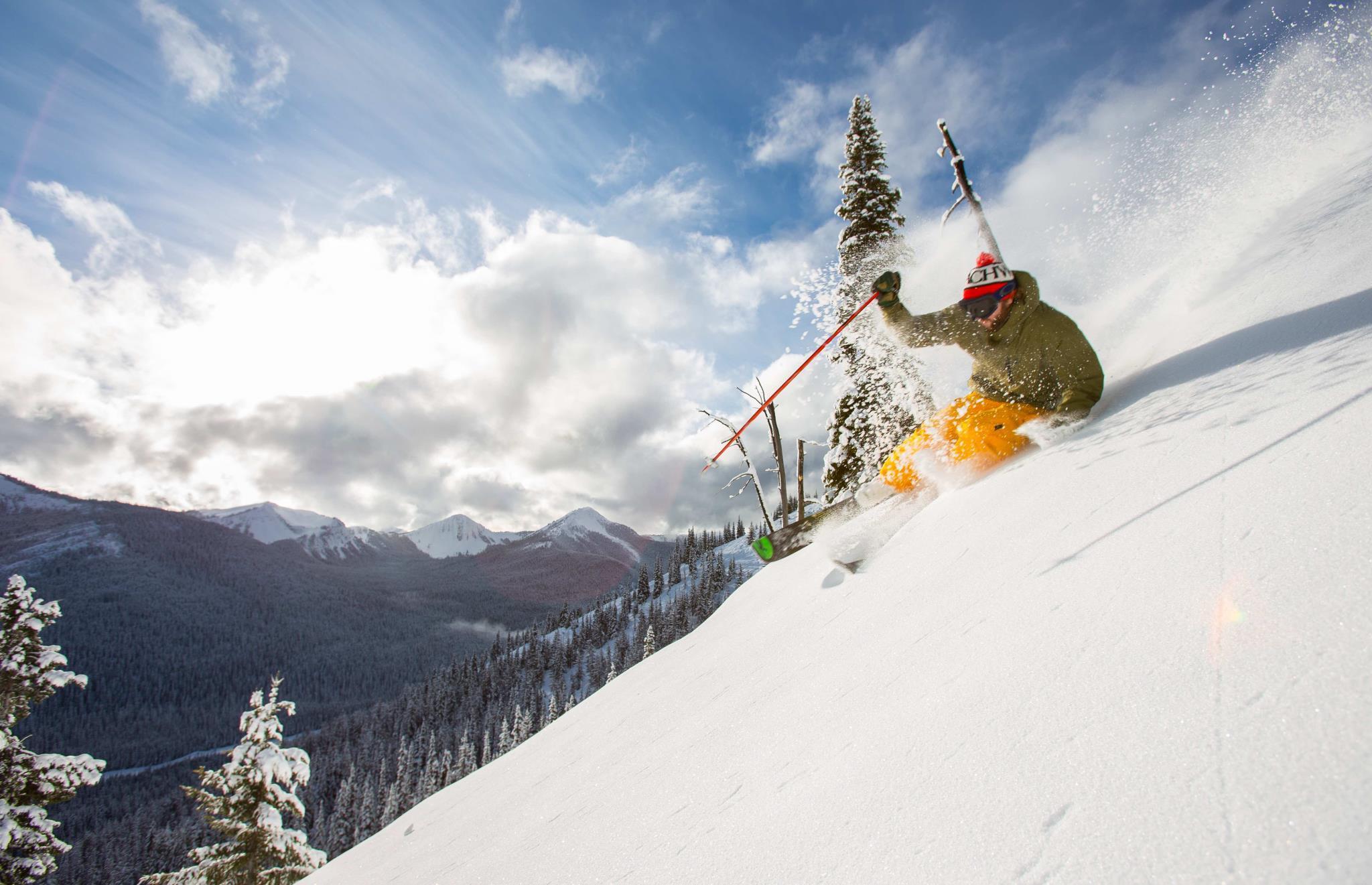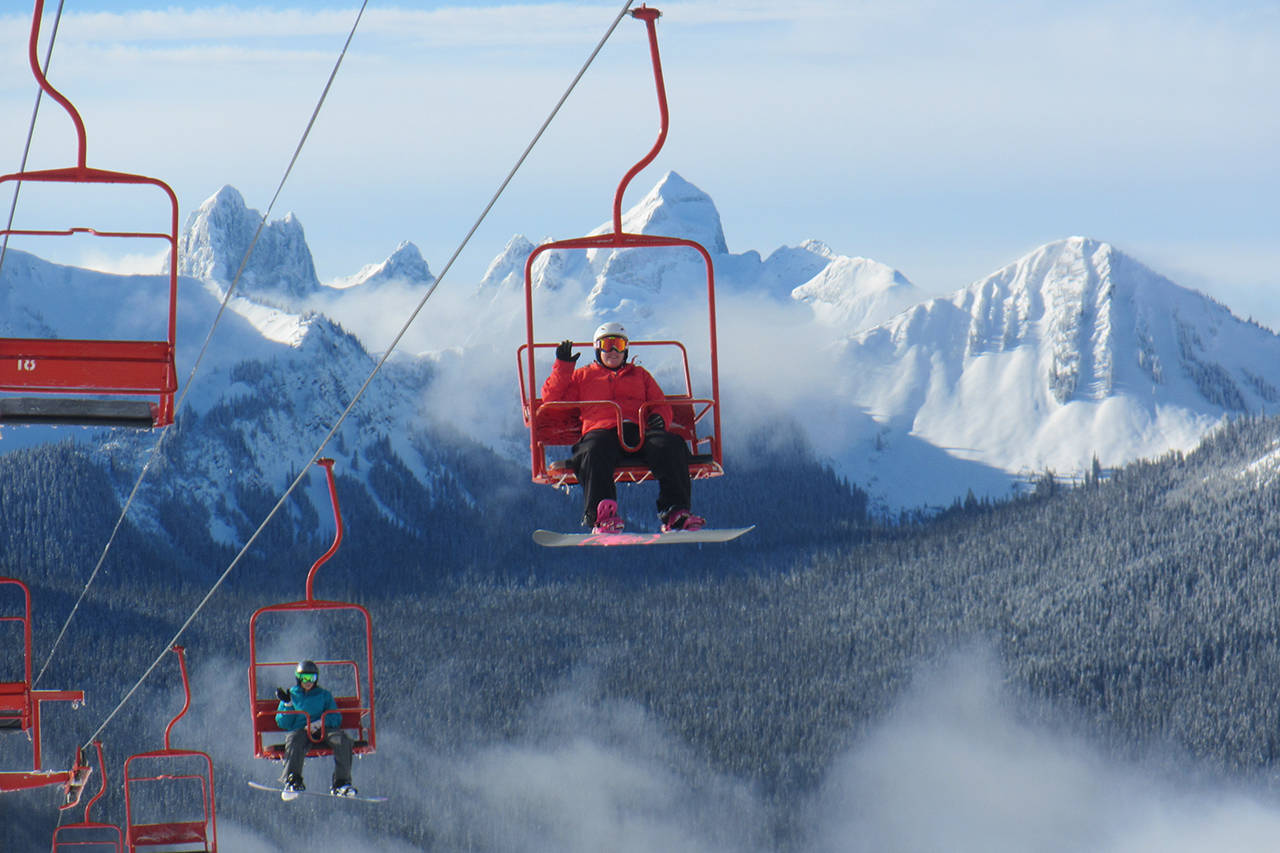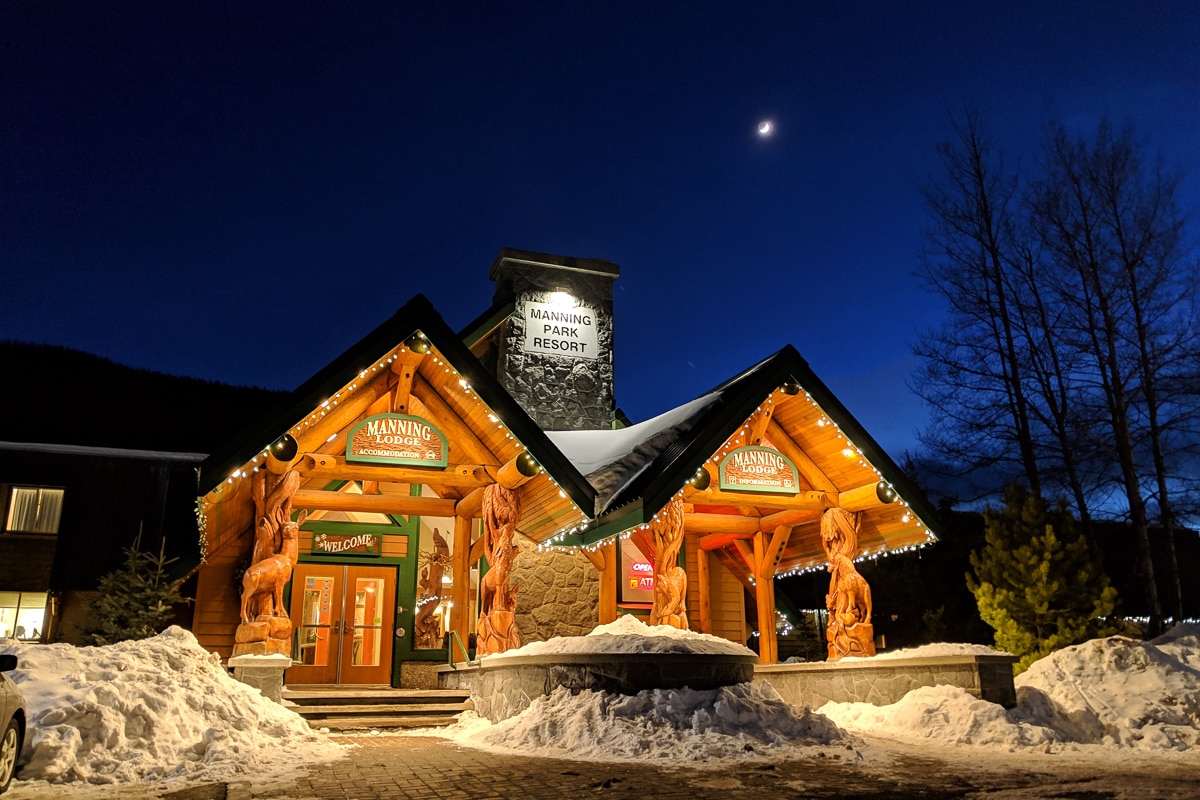There’s steak and lobster and there’s burger and fries. There’s the Whistler World Ski and Snowboard Festival and then there’s Spring Break at Manning Park Resort.

Manning Park is to Whistler Blackcomb what Lucky Lager is to Dom Perignon; the only thing the latter two have in common is the fact they both contain alcohol. Tucked into a fold of the Cascade Mountains near Gibson Pass, British Columbia, a stone’s toss from the U.S. border, lies the heart of E.C. Manning Provincial Park. This class A park, formed in 1941, was named after Ernest C. Manning, the chief forester of British Columbia who was killed in a plane crash that same year, and following numerous boundary revisions and additions, has grown to 70,844 hectares in size.
But the park’s early origins date back to 1931, when the Three Brothers Reserve was set aside to protect the fragile alpine meadows on Three Brothers Mountain northeast of Gibson Pass, from overgrazing by sheep. It wasn’t until 1949 that the Hope-Princeton Highway (Highway 3) was completed over Gibson Pass making this park accessible to cars. Then in 1967, the first ski lift was installed and Manning Park Ski Area was born.

It’s places like Manning Park where the grassroots soul of British Columbia skiing resides. I came here to tap a little of this soul, and ride some antiquated lifts sure to conjure my earliest memories of ripping the grasslands of the long-since mothballed Grandview Ski Acres near Kamloops. But I also came to witness a pair of timeless rituals with my kids; the Dummy Downhill and the Slush Cup, an initiation of sorts for my daughters into a winter tradition.
The barbecues in the trailer park—no Sheratons and Fairmonts here—are already fi red up when we pull into the parking lot, late in the morning.
“The RV park really is the heart and soul of Manning Park,” explains Robyn Barker, marketing manager for Manning Park. This little ski hill in the Cascades literally runs in the Barker family; she grew up in Hope, her dad worked at the ski hill for many years, even did a stint as manager, and her brother drives a snow-cat for the mountain.
“I pretty much grew up skiing here. All my first jobs were up here at Manning Park,” Robyn says.
With an hour before the competitions begin, Barker joins my wife, kids and I to head up for a few more runs on sun-warmed snow. We stop to watch Dummy Downhill participants making final adjustments to their creative entrants, while others willing to brave the prospect of dunking in a slushy pool of cold water tweak their costumes.
We load the Blue Chair and settle in for a rickety ride, then opt for an easy cruiser with the kids on a green-dot called Wag-on Trail. Halfway down, we stop to take in the view of this provincial park unfolding south toward the 49th parallel, a few cumulonimbus clouds drifting lazily above the rugged Cascades. A half-dozen summers ago when I drove Highway 3 over Gibson Pass, the ravages of the mountain pine beetle were raw. Recently killed trees had painted entire mountainsides orangey-red. The dead needles are long gone and the grey trunks of dead trees are less conspicuous amongst the new growth of lodgepole pine as the forest recovers.
In combination with neighbouring Skagit Valley Provincial Park to the east and Cascade Recreation Area to the north, as well as North Cascades National Park in Washington State, Manning Park, traditional territory of the Upper Similkameen and Sto:Lo Indian Band, sits at the centre of a significant tract of protected lands just a few hours’ drive east of Vancouver. Being in the business of running a family ski hill without the deep pockets of a Murray Edwards (the Alberta oil patch billionaire who owns Resorts of the Canadian Rockies) or the publicly traded Vail Resort Inc (which bought Whistler Blackcomb last year for a cool $1.4 billion) is kind of like owning a Volkswagen Van. You do it because you can’t help yourself; a labour of love simply to keep the vehicle limping down the road year after year. So it is to keep the lifts turning at a little mom-and-pop ski hill. Local spirit has never wavered, but financially speaking it’s been a different story.
In the early 2000s the resort was in receivership, and for a while the bank kept operating the hill with the understanding that if a buyer didn’t step up, the hill would be closed. In 2013, an investor from the Fraser Valley came to the table and inked a deal to buy Manning Park Resort (which includes the ski hill as well as the lodge and facilities at Gibson Pass) and also acquired the summer maintenance program (thankfully, because bankers are not meant to run ski hills). It was a lifeline to the residents of Hope and Princeton, who are the backbone of the skiing community here. But Manning Park remains old-school to the core. The lifts include two fixed-grip chairs, unimaginatively named the Blue and Orange chairs, a challengingly steep handle-tow that has shredded its share of gloves over the years and a simple T-bar.
After a few runs on the Blue, we ski over to the Orange and coax the kids down Shadow, a more challenging blue-rated run that cuts a huge zigzag down the mountain from the summit, which sits near tree line at around 1,800 metres. A family of telemarkers scoots past us as we begin the descent summoned by a loud speaker emanating from the Race Centre, announcing that the Dummy Downhill is set to begin in 15 minutes. There’s a buzz of anticipation in the spring air when we arrive at the base to watch the snow-cat shuttle 10 or so fantastical looking creations to the start area. Some of them look as if they would crumple in a puff of wind, let alone survive a downhill run over a jump with a four-foot kicker. The point of the Dummy Downhill is simple: whoever’s “dummy” travels farthest downhill wins.
“I’d suggest standing back because there will probably be pyrotechnics,” says the MC, standing a safe distance away.
The first participants launch their dummy, the “Ice Queen,” and it careens downhill catching an edge and veering sideways just as it pops over the jump. It lands to cheers and a minor explosion of bits and pieces, tumbling to a halt 10 metres away from us.
My girls look baffled, even slightly worried, with “What does this all mean?” expressions on their face. The effort put into the dummies is impressive. Next up, is “Piston Bully,” then “Super Marmot,” followed by a cavalcade of other creations.
All of them end up in in varying states of damage and disrepair.
Now it’s time for the Slush Cup. Again, the point is simple; to skim across the manmade pond without going under. The event draws the crowd temptingly close along both sides of the pool. My kids edge in closer unknowingly. The first participant skates off from the starting zone, like an Olympic Nordic jumper, dressed in a Superman worthy, red, blue and yellow one-piece, and Zola and Sabine are in for shock. Superman, obviously a seasoned slush cupper, skims effortlessly across the pond on his fat skis without getting wet, but saves a little speed to spray the crowd, including our kids, before he exits the pond. The girls recoil, and use me as a shield for the next contestant. Dressed in peacock feathers, she lacks enough speed and cartwheels to a soaking stop mid-pond—to the crowd’s great appreciation.
A pair of volunteers are standing by dry suits, masks and snorkels to help extract submersed participants.
So it goes, an afternoon of shenanigans that to a cultural anthropologist from another planet would be inexplicable behaviour.
“Daddy, why are they doing this?” Sabine asks me with typical childhood bluntness. Perhaps the only explanation is that there is no explanation other than to celebrate the simple joy of sharing community at a mom-and-pop ski hill, and indulging in some no holds barred silly behaviour.

Later, after burgers and fries at the day lodge, we load up the vehicle for the short drive back down to our cabin. The spring sun is hanging warm and high in the sky as we bump slowly around the lower parking lot, where diehard locals recline in lawn chairs around barbecues, basking in the mingling scents of various cuts of grilling meats.
You can’t fabricate this kind of ski hill character; it just happens.
If You Go
Stay
Manning Park Resort offers accommodations to suit any budget or group size. The Manning Lodge is a 41-room all-season hotel; the Cabins can accommodate groups of up to 10; the Chalets are suited for families of up to 14 people; and the Last Resort is suited to large groups.
Eat & Drink
There are four dining options at the resort. The Pinewoods Dining Room offers fine dining with a picturesque mountain backdrop; the Bear’s Den Pub is a casual pub with tasty food and a funky décor; the Cascade Room is ideal for groups, including weddings and large family gatherings; and the Day Lodge offers a full-service cafeteria.
Play
In addition to skiing, the resort features a tube park, tobogganing, ice skating and snowshoeing.
For More Info
Visit manningpark.com for information on vacation packages, activities and events and lessons and rentals.

